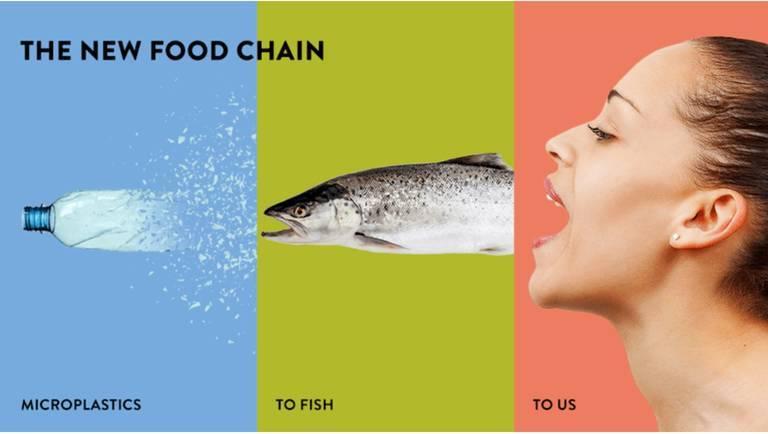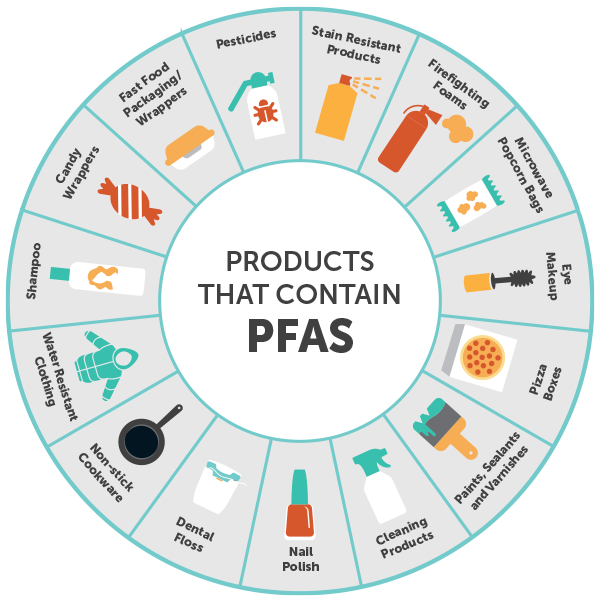
When we think of preventing or managing diabetes, our focus is mainly on avoiding sweet dishes or other food items that increase our blood sugar (glucose) levels. But in order to truly keep diabetes at bay, we should also take into consideration the plates we are eating on, the utensils in which the dishes have been prepared, the wrappings the food ingredients come in, et al. There are many people out there who take good care of their bodies through exercise and have healthy eating habits and yet develop type 2 diabetes. Chances are that in such cases, environmental chemicals found in everyday-use products like plates, utensils, and water bottles might be the reason behind the person developing diabetes.
Along with common plastics, personal care products, pesticides, industrial chemicals, etc., have also been known to cause disruption to our endocrine system.
Environmental chemicals, also known as endocrine disruptors, are non-natural chemicals that can interfere with the endocrine system. The endocrine system regulates hormone production and metabolism, and its disruption can lead to hormonal imbalance and thus insulin resistance, a hallmark of type 2 diabetes.
Endocrine Disrupting Chemicals (EDCs) interfere with hormonal actions in different ways. Firstly, they can mimic or copy hormones, which causes the body to overreact or react at the wrong time. They may also block the pathway between a natural hormone and a receptor, which can cause problems in insulin signalling. Lastly, EDCs may affect glands, making too much or too little of a certain hormone type. This can consequently result in several health disorders, including diabetes.

Chemicals that Cause Maximum Harm
Let's take a look at some of the most common Endocrine Disrupting Chemicals (EDCs) that may give rise to diabetes.
BPA
One of the most well-known environmental chemicals linked to diabetes is bisphenol A (BPA). It is commonly found in products meant for daily use, like plastic water bottles, make-up product bottles or containers, spectacle lenses, feminine hygiene products, electronic items, etc. BPA was among the first chemicals to be identified as an endocrine disruptor. Studies have shown that BPA can decrease insulin secretion and interfere with insulin signalling, causing insulin resistance and leading to an increased risk of diabetes. Insulin signalling helps regulate glucose, lipid molecules, and energy homeostasis (balance), so if something goes wrong with insulin signalling, it may increase blood sugar levels. In addition, BPA has been shown to alter glucose metabolism and increase oxidative stress, both of which are associated with the development of diabetes. Oxidative stress can damage cells, proteins, and DNA.
As per studies, exposure to BPA has been shown to alter the gut microbiome in mice, leading to reduced glucose tolerance.
There is a lack of international agreement to regulate the use of BPA in products, and people are therefore not really aware of the health risks.

PFAS
Another set of environmental chemicals linked to diabetes is perfluoroalkyl and polyfluoroalkyl substances (PFAS). PFASs are a group of chemicals used in a variety of consumer products, including non-stick cookware, food packaging, and certain textiles. These chemicals are mostly used in the manufacturing or cleaning of products where extremely low surface tension is required or durable water-, grease-, and oil repellence is needed. Examples of such products would be chromium metal plating, which is done in everything from taps to car wheels to airplanes and fire-fighting foams.
PFAS are also used for surface cleaning of items like textiles, carpets, and paper. PFAS has also been found to interfere with insulin signalling and increase insulin resistance, leading to an increased risk of type 2 diabetes. Again, just like BPA, PFAS has also been shown to alter glucose metabolism and cause oxidative stress, both of which are associated with the development of diabetes.
Exposure to PFAS has also been linked to chronic inflammation, which is a known risk factor for diabetes. Several studies show that PFAS can alter the function of estrogen and androgen receptors and also cause thyroid hormone imbalance. All of these have important roles in metabolic function.
Since PFAS can be found in a wide range of products, it is present even in the remotest corners of the earth. They are bioaccumulative, which means humans and animals (both domestic and wildlife) absorb them at a faster rate than they are released into the environment. The whole food chain can get contaminated this way.
There is strict monitoring of PFAS worldwide, but more steps need to be taken.

Phthalates
Phthalates, a group of chemicals, are used in a variety of everyday consumer products, like toys, food packaging, shampoos, and hair sprays. It is also used in vinyl floors, wallpaper, paints, sealants, adhesive coatings, garden pipes, and medical tubes. Phthalates have also been linked to an increased risk of diabetes. They have been found to interfere with insulin signalling and increase insulin resistance, leading to an increased risk of type 2 diabetes. In addition, phthalates can alter glucose metabolism and cause oxidative stress, both of which are associated with the development of diabetes. Exposure to phthalates also reduces glucose uptake in cells, which increases glucose in the bloodstream.

Pesticides
Diabetes has been linked with exposure to all types of pesticides, including insecticides (chemicals to kill insects), herbicides (chemicals to kill plants), fungicides (chemicals to kill fungi), rodenticides (poison for rodents like rats, mice, rabbits, etc.), and molluscicides (chemicals to kill snails and slugs). Rodenticides were found to be the most harmful.
Pesticides, including insecticides, come under the category of persistent organic pollutants (POPs). They are a matter of global concern because of their capacity for long-range transport, their continued presence in the environment, and their ability to bio-magnify. Bio-magnification means they have the capacity to enter our systems through multiple sources, like water and food.

Insecticides increase gluconeogenesis. It is the metabolic pathway that produces glucose from non-carbohydrate sources. Excessive gluconeogenesis is a key marker of diabetes and can cause problems in blood sugar regulation. It can also inhibit acetylcholinesterase, an enzyme that helps in the breakdown of the neurotransmitter acetylcholine. High acetylcholine levels promote high blood sugar levels and insulin resistance.
Arsenic
Arsenic, a toxic chemical commonly found in water and food, interferes with insulin signaling and increases insulin resistance, leading to an increased risk of type 2 diabetes. Arsenic also alters glucose metabolism and causes oxidative stress, which gives rise to diabetes.
EDCs are also known to cause gestational diabetes in pregnant women. In many cases, they may alter the DNA of a human fetus, increasing its risk for diabetes and other diseases.
Conclusion
Toxic chemicals, though invisible, slowly chip away at our health little by little, day after day. Since they can be found in almost every product we use, in the food we eat, and also in the air, water, and soil around us, we need to be careful. The sheer amount of non-natural chemicals present in the environment is scary and can harm us no end. Type 2 diabetes is not the only disease that is linked to toxic chemical exposure; it can also lead to reproductive and thyroid disorders, certain hormone-related cancers, immune problems, neurological issues, etc. Exposure to environmental chemicals can be reduced by adopting a lifestyle that is more in tandem with nature. Using eco-friendly materials for everyday use, buying personal care products that contain little to no chemicals, and taking care of our diets are our best bets to fight Endocrine Disrupting Chemicals.
Disclaimer: The information and other content provided in this blog, or in any linked materials, are not intended and should not be construed as medical advice, nor is the information a substitute for professional medical expertise or treatment. If you or any other person has a medical concern, you should consult with your healthcare provider.


.png)


